
Every day, UAB engineers are engaging in research that is shaping the world we live in. In the School of Engineering’s laboratories, world-renowned faculty work alongside engineering students to tackle everyday challenges in areas such as telecommunication, power systems, or highway safety and transportation.
Other labs focus on creating a better future through research into tissue engineering, composite materials, and sustainable smart cities, to name just a few.
The School of Engineering is also home to several research centers, where engineers of different disciplines, as well as scientists from across campus, converge on collaborative projects and interdisciplinary research. Examples of research include:
EITD Research Group
Hardware designed and built in the Engineering Technology and Applications Development (EITD) research group is in constant use on the International Space Station. In recent years, the EITD has had as many as 17 payloads in orbit at any given time as part of a $500 million contract with NASA.
BME
Engineers in the Department of Biomedical Engineering collaborate with clinicians and other engineers to develop cardiac tissue that is expected to change the way heart attacks are treated. For the past three years, the department has ranked in the top five nationally in funding received from the National Institutes of Health.
MPAD Center
At the Materials Processing and Applications Development (MPAD) Center, researchers develop the technology that goes into everything from buses and tanks to buildings to electronics and medical devices.
Additionally, at the Sustainable Smart Cities Research Center, engineers are examining all aspects of urban life in an effort to develop the systems that will solve the significant challenges that will face future generations. In the Integrated Systems Center, electrical engineers are looking at areas of convergence where Big Data and complementary systems will help shape our understanding of the next generation of communication and scientific inquiry.
Explore Research by Department
- Research in Biomedical Engineering
- Research in Civil, Construction, and Environmental Engineering
- Research in Electrical and Computer Engineering
- Research in Materials Science and Engineering
- Research in Mechanical Engineering
-
Research in Biomedical Engineering
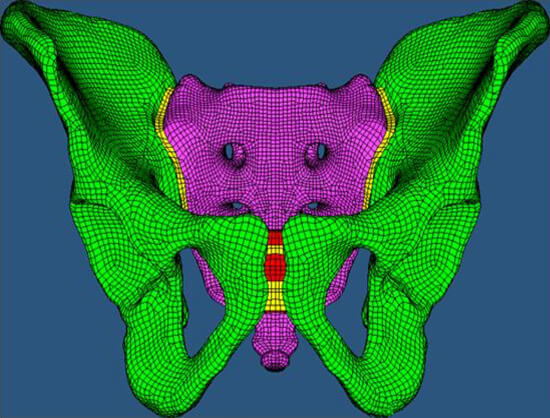 Research is at the center of the Department of Biomedical Engineering (BME). Our mission is to improve health care by making scientific discoveries, solving problems, and advancing technology using quantitative methods. Our faculty, secondary faculty, adjunct faculty, and emeritus faculty have a productive and diverse research focus covering a wide range of topics.
Research is at the center of the Department of Biomedical Engineering (BME). Our mission is to improve health care by making scientific discoveries, solving problems, and advancing technology using quantitative methods. Our faculty, secondary faculty, adjunct faculty, and emeritus faculty have a productive and diverse research focus covering a wide range of topics.Some examples of research conducted by the department include:
Biomedical Engineering
Research in the BME Functional Imaging Program focuses on development of improved techniques for investigating brain function. Research projects range from technical MRI development to study of visual systems in the brain and functional investigations of the mechanisms by which the brain recovers function after stroke.
Biomedical Implants and Devices
- Biomaterials research spans the breadth of projects from materials and implantable device development/characterization to the host response to such implantable devices.
- Implant Biomechanics is focused on minimizing the loosening of joint replacements and implants caused by mechanical wear, interfacial debonding, and mechanical interaction between the implant and the surrounding host material.
- Biomaterial-enhanced Tissue Regeneration research applies advanced biomaterials approaches to promote healing and regeneration in pressure ulcers, burns, blood vessels, nerves, bone, cartilage, and vascular anastomosis.
Cardiac Electrophysiology
Each beat of the heart is triggered by an electrical impulse that propagates through the heart muscle in a well-ordered sequence. Cardiac electrophysiology is the study of this process and the ways in which it can go wrong.
Tissue Engineering and Regenerative Medicine
Tissue Engineering and Regenerative Medicine is an interdisciplinary research and development program focusing on development of tissue constructs, regenerative matrices, and novel technologies and therapies to replace or repair both soft and mineralized tissues.
-
Research in Civil, Construction, and Environmental Engineering
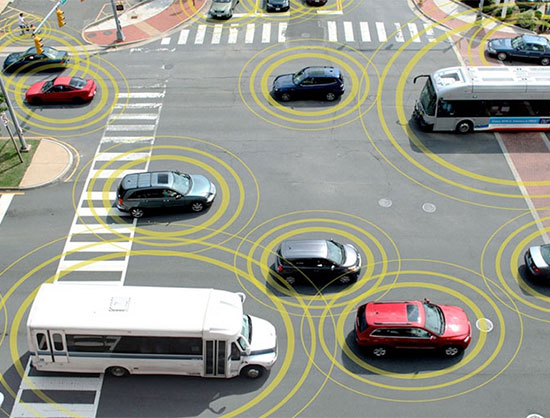 The Department of Civil, Construction, and Environmental Engineering (CCEE) has extensive research programs in the areas of structural, transportation, and environmental engineering. It is currently a leader in two research centers.
The Department of Civil, Construction, and Environmental Engineering (CCEE) has extensive research programs in the areas of structural, transportation, and environmental engineering. It is currently a leader in two research centers.Some examples of research conducted by the department include:
Structural Engineering
The field of structural engineering deals with the design of buildings, bridges, and other structures with the goal of producing economic and efficient designs while maintaining the safety of the public. Projects include:
- Mobile Automated Rovers Fly-By for Bridge Inspection and Resiliency
- High Data Density Short Range Wireless Telemetry for the Next Generation Internet of Things
Transportation Engineering
Research is centered in the UAB Transportation Engineering and Development (TREND) Lab. The TREND Lab develops solutions to transportation challenges through innovative transportation research and development. Our current research and training activities focus on congestion management, traffic control, transportation safety, Intelligent Transportation Systems, smart transportation applications, and transportation data analytics.
Environmental Engineering
The UAB Department of Civil, Construction, and Environmental Engineering is committed to the delivery of engineering fundamentals and experiential learning to ensure our students are immediately productive in their chosen profession and able to create and apply their knowledge for the benefit of our collective society.
Centers & Laboratories
The Department is currently a leader in two research centers:
- The UAB Sustainable Smart Cities Research Center (SSCRC)
- The Southeastern Transportation Research, Innovation, and Education Center (STRIDE)
The department has state-of-the-art testing labs for structural, environmental, and geotechnical research. Lab equipment includes test frames (up to 600 kip), torsion machine, concrete mixing equipment, soils testing equipment, and fully equipped environmental testing labs. It also has computer labs and software for transportation simulation and modeling.
-
Research in Electrical and Computer Engineering
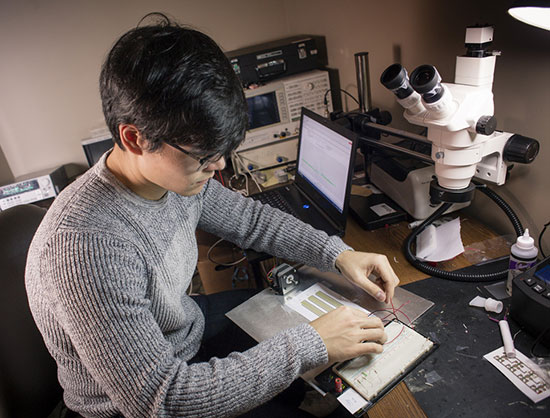 The Department of Electrical and Computer Engineering (ECE) conducts a diverse variety of research spanning microelectronics and embedded systems, signal and image processing, biotechnology, and nanotechnology.
The Department of Electrical and Computer Engineering (ECE) conducts a diverse variety of research spanning microelectronics and embedded systems, signal and image processing, biotechnology, and nanotechnology.Some examples of research conducted by the department include:
Power Systems
The focus of electric power research is in the area of resilient power systems, especially research related to power system protection and control. The Electric Power System Innovation and Demonstration Lab performs research, development and demonstration of innovative, practical technology to improve electric power system resiliency.
Software
With a unique blend of research projects and services provided, the software-focused elements of ECE drive the future of software engineering and advance current projects across many application domains. Research areas include:
- Big Data Research and Analytics
- Self-Evolving Software Ecosystems
- Biomedical and Clinical Informatics
Hardware
The department plays a lead role in UAB's research and development of electrical and electronic devices. We work on both analog and digital devices that are used in a variety of applications ranging from sensors to computers. Our labs include:
- Bio-inspired Integrated Circuits Lab
- Very Large Scale Integrated Circuits Design Lab
- Signal Processing and Embedded Systems Lab
Healthcare Engineering
With a diverse variety of specialization areas that spans microelectronics and embedded systems, signal and image processing, biotechnology, and nanotechnology, the department plays a critical role in developing novel solutions for health-care problems to benefit our society.
-
Research in Materials Science and Engineering
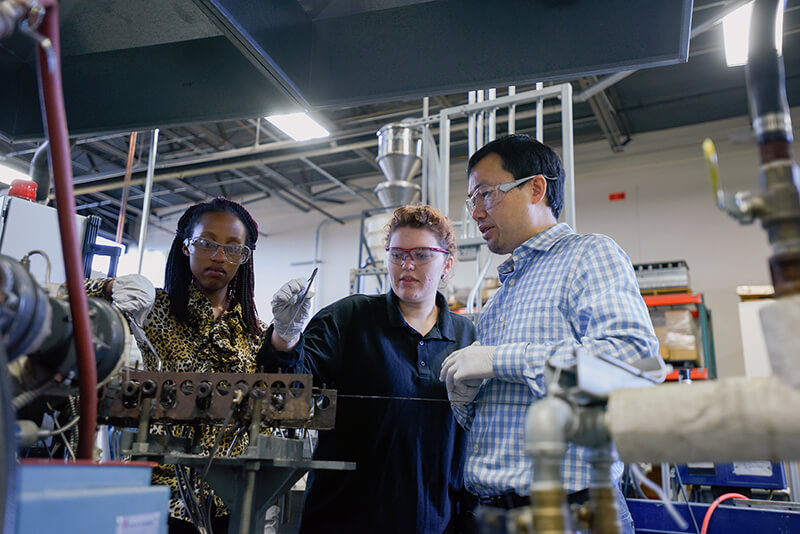 The Department of Materials Science and Engineering hosts the UAB Materials Processing & Applications Development (MPAD) Center, which brings leading researchers and cutting edge equipment together to create innovative new materials and processes.
The Department of Materials Science and Engineering hosts the UAB Materials Processing & Applications Development (MPAD) Center, which brings leading researchers and cutting edge equipment together to create innovative new materials and processes.The center is a 20,000 square foot facility dedicated to advanced composites and metal castings research and applications development. It serves the automotive, transportation, defense, infrastructure, and energy industries for advanced engineered plastics and composites design, analysis, processing, manufacture, and product development.
It is also the home of:
- work being done under the Cooperative Agreement with the Army Research Laboratory, and
- Department of Energy Graduate Automotive Technology Education center for vehicle lightweight technologies.
-
Research in Mechanical Engineering
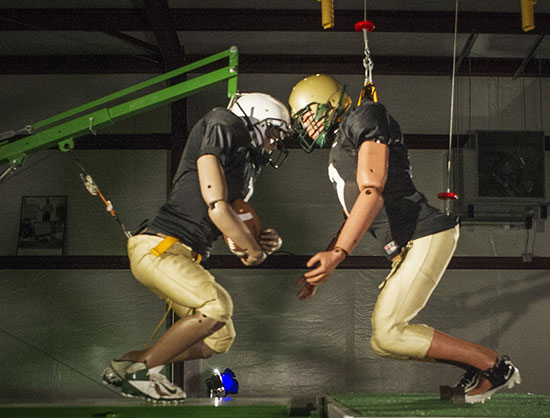
The Department of Mechanical Engineering (ME)at UAB has a long history of pursuing interdisciplinary research projects with support from industry and government agencies and in collaboration with other departments at UAB, other universities, and national laboratories.
Some examples of research conducted by the department include:
Computational Fluid Dynamics
Traditionally, computational fluid dynamics techniques are developed for aerodynamics applications. Our research focuses on the application of CFD techniques to traditional, non-traditional, and multi-disciplinary applications.
Energy Systems
Current projects include heat pumps; energy use index study of UAB campus buildings; feasibility study of distributed generation system for UAB buildings; internal combustion engine based tri generation of heating, cooling, and power; and concentrated PV thermal management.
Geologic Storage of Carbon Dioxide
Separation of carbon dioxide from the products of combustion of fossil fuels in large industrial facilities such as electric power plants and injection of the carbon dioxide for permanent storage in suitable geologic formations underground is a practical approach to slowing the accumulation of carbon dioxide in Earth's atmosphere and its contribution to climate change.
Computational Structural Mechanics
Our CSM research includes static and dynamic analyses of complex solid bodies using computational approaches such as finite volume, finite element, discrete element, and meshless methods. The focus of this group is on applications involving large strain, high strain rates, and strong shocks occurring in impact events.
Barber Laboratory for Advanced Safety Engineering and Research (BLASER)
Our BLASER research includes dynamic evaluation of real-life impact events using explicit finite element analysis and physical testing. The focus of this group is crash energy management and enhancing crashworthiness on applications in automotive and sports safety.
Vehicle and Robotics Engineering Lab (VREL)
VREL is a research facility dedicated to vehicle and robotics engineering research, with a focus on developing a cross-disciplinary, multi-domain systems engineering approach to engineer vehicle and robotic intelligent physical/mechatronic systems. We work in partnership with other academic institutions, industry, governmental research agencies, and intergovernmental international organizations.